Storm-Petrels - the birds who gave us the name "petrel" from their St. Peter-like ability to, apparently, walk on water - are at the same time the most delightful and the most frustrating of seabirds. That they are delightful I will, I hope, make obvious from my photographs. The frustration comes from the fact that many species are notoriously difficult to identify. Fortunately, that was not a problem on our trip. The two species on offer were very different from each other, removing the frustration and leaving only the delight.
The White-faced Storm-Petrel (Pelagodroma marina) is a widespread species that I have encountered in places as distant from each other as Australia and Peru. It is one of the few storm-petrels that can be described as unmistakeable; no other member of the family has a similar pattern.
At the individual level, though, things are more difficult. Notice the differences in the amount of white on the face, and the extent of the grey breast-band, of the birds in these photographs, in the photos above...
...and on this bird. Are these age or sex differences (though there aren't supposed to be any, except for lover wings and tails on females), individual variations, or are these birds from separate breeding populations (there are at least five subspecies worldwide)? I confess I don't know.
The White-faced Storm Petrel, like some of the other members of its family, has yellow webbing between its toes - the brightest colour on the bird. Does this somehow help them to attract small sea creatures when they "patter" on the surface?
The pattering behaviour of storm-petrels is not just a matter of feeding technique. According to a 1979 study by Philip Withers, the drag on their feet provided by the water's surface helps keep them aerodynamically stable as they hover over the water. Withers compares this to the stabilizing effect of a kite string.
The White-faced Storm Petrel has its own peculiar set of feeding movements, bouncing repeatedly from the surface of the water.
The result has been likened to a man on a pogo stick, but I think it looks rather balletic.
Anyway, the object of this action is to catch tiny crustaceans, fishes and other floating plankton. They seemed to like our chum, too.
Our other storm-petrel was perhaps the ultimate Hauraki Gulf specialty - and for a long time, no one even knew it was there. Until then, without a close look, a bird like this one might have been dismissed as Wilson's Storm-Petrel (Oceanites oceanicus), a globally-distributed species that may be the most numerous wild bird in the world. The blackish plumage and white rump-band are a feature of many storm-petrels.
A striped belly, however, is something unique - and so is the bird that bears it.
Before 2003, the New Zealand Storm-Petrel (Oceanites maorianus) was known only from three specimens collected during the nineteenth century. In that year, birders began seeing strange storm-petrels, with boldly-striped underparts unlike those of any other species, on the waters of the gulf. Slowly, the evidence began to grow that these birds were the same as the long-lost birds described over a century earlier. The New Zealand Storm-Petrel was back.
The rediscovered population must be extremely small. Birdlife International's fact sheet on the New Zealand Storm-Petrel suggests that there may be no more than fifty of them. Though they probably breed on islands somewhere in Hauraki Gulf, no one knows exactly which island, or islands, they use.
Nonetheless, the birds are now a frequent sight on pelagic trips in the Gulf during the austral summer. We saw three individuals at least, and they were, of course, the birds of the trip.
Like the White-faced Storm-Petrel, the New Zealand Storm-Petrel is a balletic patterer over the ocean surface.
It is nice to be able to end the account of my Hauraki Gulf pelagic with a gallery of photos of one of the rarest and least-known birds in the world - and yet one that is becoming relatively easy to see, not far from the largest city in New Zealand.
It was a privilege, and a thrill, to be able to see it.





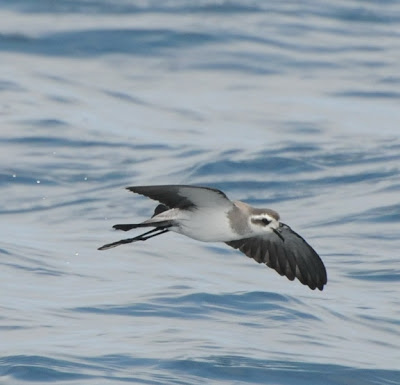



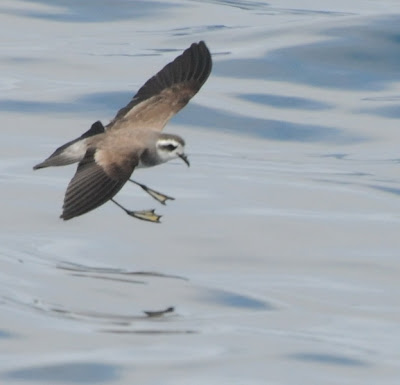
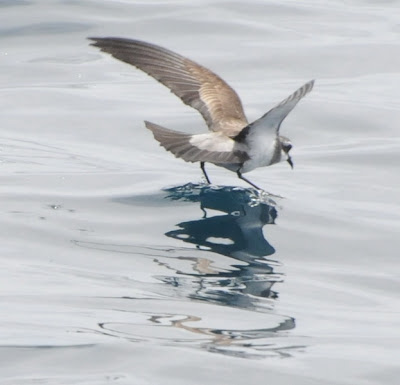







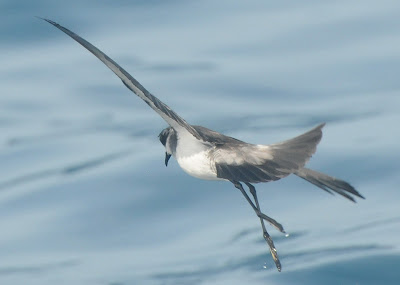
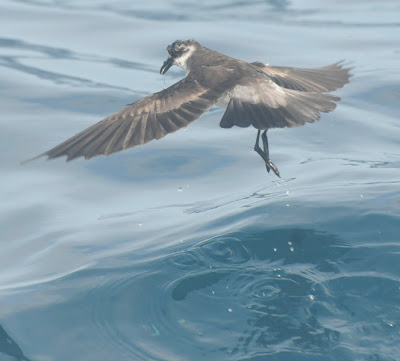











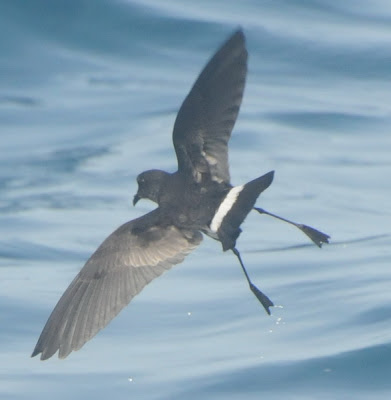
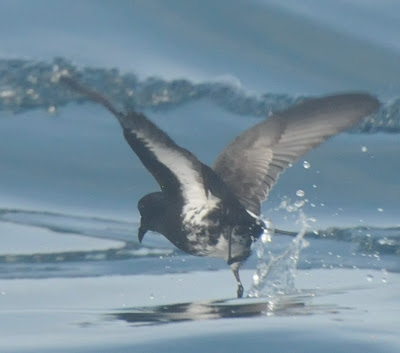

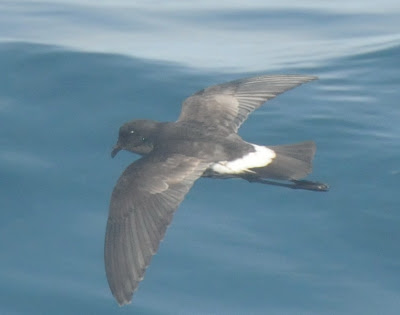








No comments:
Post a Comment